When you think of grass, you might think that it comes standard, but it really doesn’t.
There are different types of grass to know about so that you can give the grass that’s in your garden the best chance at survival.
How many types of grass are there?
Broadly speaking, there are two main types of grass: warm-season grasses and cool-season grasses. What this means is that warm-season grasses grow best in hot climates, while cool-season grasses thrive in cooler temperatures.
That said, there are different types of grasses that fall under these broad categories.
Here’s what to know about them.
If you’d like to see a graphical breakdown of the types of grasses, we got you covered:

Share this Image On Your Site
<p><strong>Please include attribution to GustafsGreenery.com with this graphic.</strong><br /><br /><a href=’https://www.gustafsgreenery.com/grass-types/’><img src=’https://www.gustafsgreenery.com/wp-content/uploads/2019/12/Types-Of-Grasses.jpg’ alt=’Types Of Grasses’ width=’780px’ border=’0′ /></a></p>
Table of Contents
Cool-Season Grass Vs. Warm-Season Grasses
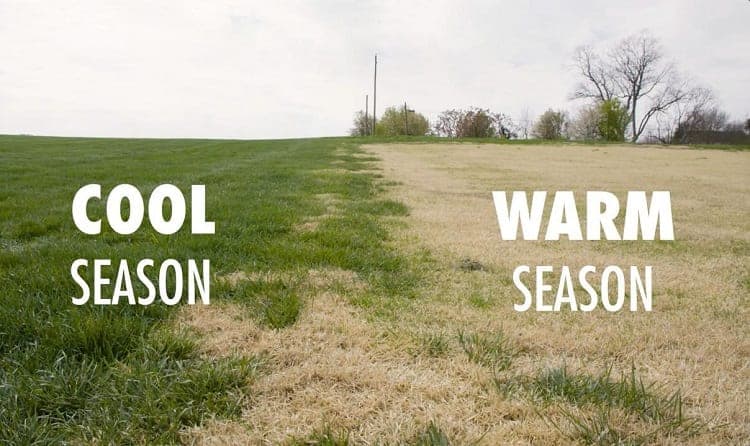
Apart from how they thrive in different temperatures, there are some other important distinctions to be made between cool-season and warm-season grasses.
Cool-Season Grasses
Most cool-season grass varieties are known as bunching.
This means that they have a tufted growth, but the exception to this is Kentucky bluegrass.
In addition, most cool-season grasses have broad mid-veins, but some also have rolled leaf blades as well as multiple veins.
Cool-season grass turns brown when the weather is really hot, but Tall Fescue is a type that is supremely resistant to high temperatures, as Gardening Know How reports.
Warm-Season Grasses
Warm-season grass is of tropical origin and so it does best during the hot summer season.
These types of grasses are tough and they give you a lovely dense lawn cover.
When it’s very cold, they don’t maintain their green color – their leaves tend to go brown during the late fall.
They become green again when the weather warms up. You can expect these types of grasses to stay green for about half a year.
Eight Main Types Of Grass
There are thousands of grass species, but in the U.S. you can narrow different grass types to eight main types of grass.
Here’s an outline of each of them.
Cold-Season Grasses
Kentucky Bluegrass
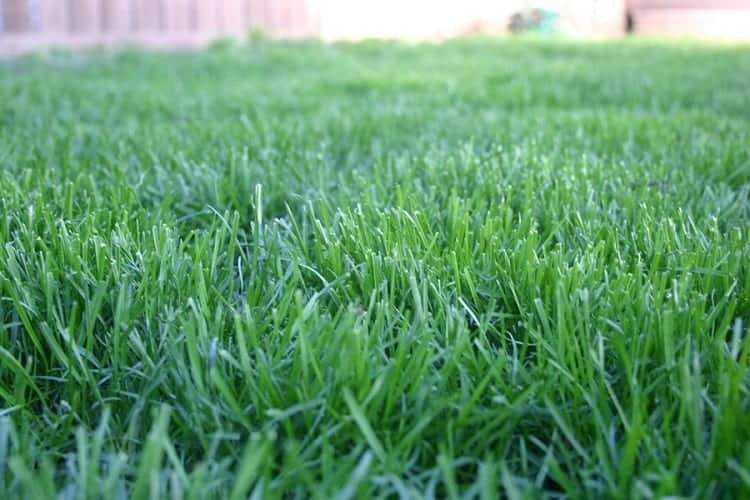
This is a grass with a dark green color and it grows upright and stiff.
How it spreads is by underground stems that are known as rhizomes, as Hunker reports.
These give the grass a denser appearance, so it’s thick and can tolerate foot traffic.
It grows best during the fall season, winter, and early spring. It’s a type of grass that’s very popular throughout the U.S.
Perennial Ryegrass
This is commonly found in the coastal regions of the country, as well as in mid-to-north areas.
It has a fast germination rate, which makes it a popular choice, and it’s also resistant to traffic.
Ryegrass is usually used in combination with Kentucky bluegrass for overseeding lawns in the winter.
You can easily identify it from Kentucky bluegrass by how the back of its leaf blade is shiny and its stem purple.
Fine Fescue
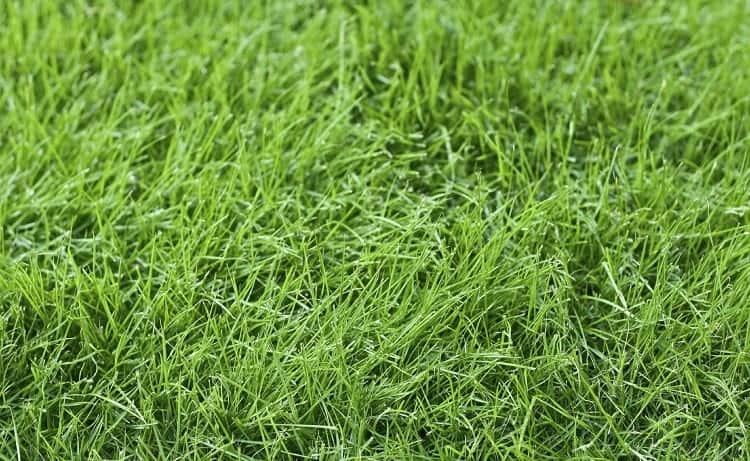
Fine Fescue can be found in areas from Northeast to North Central U.S.
It is shade-tolerant and can be distinguished from other types of grass by its narrow leaves.
It also has a light green color.
You can mix it with Kentucky bluegrass as well as Perennial Ryegrass, but ensure that you have an even distribution of it so that your lawn doesn’t become patchy because of the differences between these grasses.
Tall Fescue
This grass is resistant to negligent owners because it doesn’t require lots of mowing or fertilization.
It is grass that can be found all over the country. It can even adapt to clay soil, so it’s perfect for use in lawns that have problematic soil.
However, Tall Fescue needs to be watered a lot during the summer.
This also means that it’s not as drought-resistant as other types of grass.
Warm-Season Grasses
Bermuda Grass
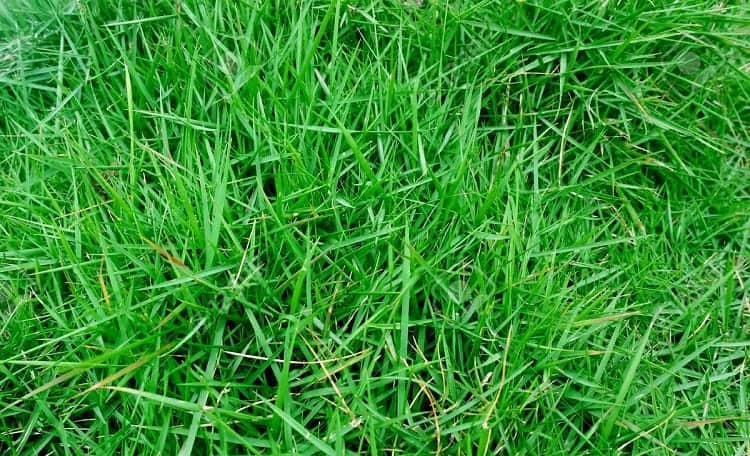
This type of grass is popular because it grows so well in hot, drought-stricken areas.
It’s mainly found in central U.S. regions and experiences a growth phase during late spring and all through the hot summer.
Interestingly, you’re likely to find Bermuda Grass on golf courses and athletic fields.
It grows really quickly, so if you’re interested in seeding your lawn, Bermudagrass is a great choice.
Zoysia
If you want to avoid weeds in your garden, Zoysia grass is the best one to choose for your lawn because it’s so resistant to them.
It’s one of the warm-season grasses that tolerate cool weather much better than other types, so you can put it in shady areas of your garden.
The one downside is that Zoysia grows a bit slower than other types of grasses, but eventually you will get a lovely thick lawn.
You might have Zoysia grass in your lawn if you live in the Midwestern parts of the country, east to the Carolinas, as it’s found there.
St. Augustine
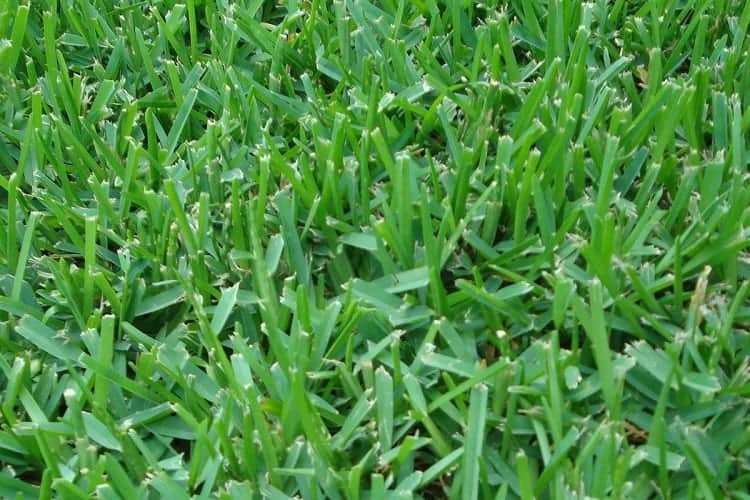
Another warm-season grass that keeps weeds at bay is St. Augustine.
While it’s a favorite thing is to be in full, direct sun, it can be placed in the shade so it’s another type of grass that can help you repair dead patches in your garden where the sun doesn’t often shine.
Buffalo Grass
This grass name isn’t a coincidence – it originated in the open plains that were home to buffalo, as Hunker reports, and you can still find it in western prairies of the U.S.
It’s great for areas where there are high temperatures as well as drought.
The one thing to bear in mind with Buffalo Grass is that it can’t deal with a lot of rain so if you live in a wet region, then it won’t do well in your garden.
How Can You Determine What Type Of Grass You Have?
Generally, the type of grass that will grow in your garden depends on where you live.
Cool-season grass grows in the northern parts of the nation, north of North Carolina, Arkansas, Alabama, and Oklahoma, and the mountainous areas of Arizona, California, and New Mexico.
Cool-season grass requires temperatures between 65 and 75 degrees Fahrenheit in order to grow at its best.
A warm-season grass, on the other hand, will be found in the areas of the country where it’s warmest, such as Southern California.
Warm-season grass requires temperatures of between 80 and 95 degrees Fahrenheit in order to grow.
When To Feed Cool And Warm-Season Grasses
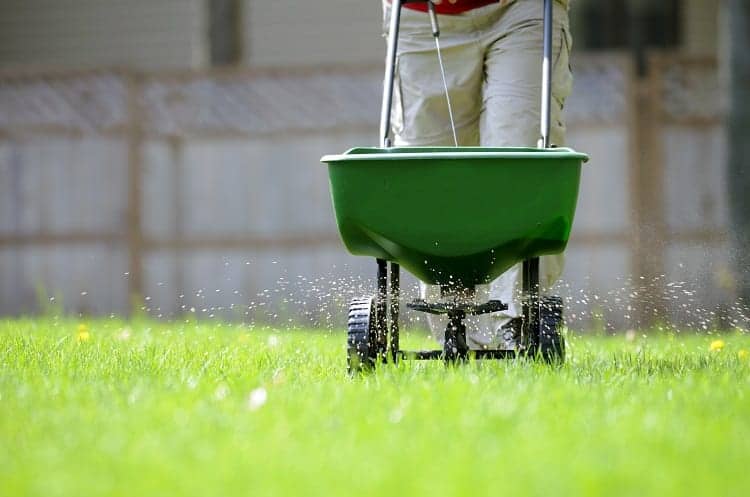
If you have a warm-season grass on your lawn, it will grow best during the hotter seasons so you should ideally start feeding it in spring.
Do this every two months until the early fall so that it’s prepared for the colder months.
If you have a cool-season grass, on the other hand, it will burst into life around the spring and fall.
It might even become a bit dormant during summer when the temperature hits its peak.
You want to nourish it in the springtime – twice – and also feed it twice during the fall to give it enough of what it needs to flourish.
In the summer, even though it goes dormant, you should give it nutrients every six weeks or so and irrigate the lawn so that it continues to grow.
Other Factors To Consider
If you want to grow grass, it’s important to know how to take care of it so that it can thrive.
Different grass types will require different types of care.
Here’s a rundown of how to look after your lawn depending on the type of grass you’re trying to grow.
Kentucky Bluegrass
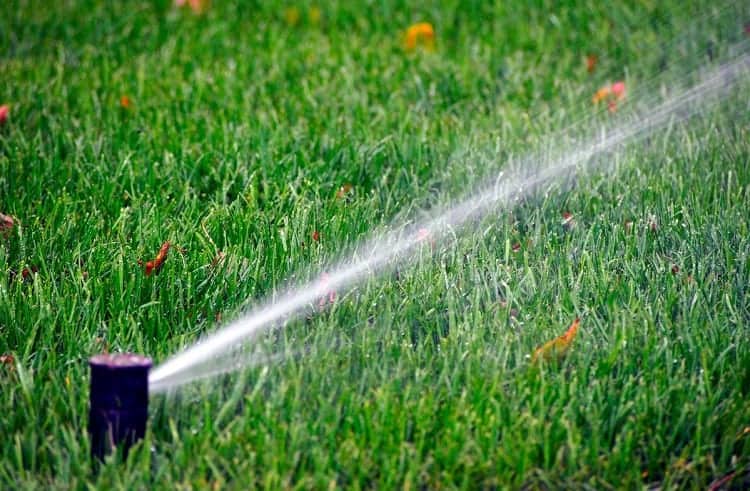
- Mowing: You should cut this grass so that you leave three inches of it as a maximum length. Don’t mow it when there’s a drought as that can place stress on it.
- Watering: You should water this grass once a week unless it’s hot during the summer. Then, you should increase watering it twice a week.
Perennial Ryegrass
- Mowing: When cutting Perennial Ryegrass, you should stick to a grass height of 1 ½ to 2 ½ inches so that you ensure that it can remain thick.
- Watering: It needs to be watered a bit more than grass varieties such as Tall Fescue. If the grass goes dormant during a drought, it tends to recover quickly but it might need to be overseeded if the drought has been on for too long. Make sure you water it two to three times a week.
Fine Fescue
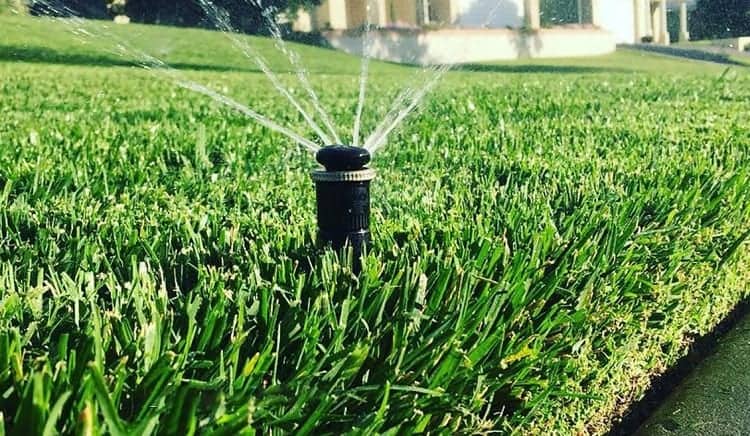
- Mowing: Make sure you mow Fine Fescue by cutting it no shorter than one inch and no higher than three inches. However, it’s a really low-maintenance grass when it comes to mowing because you don’t have to mow it if you don’t want to.
- Watering: You will need to water Fine Fescue irregularly because it actually wants to be in dry soil. If you water it too much, it will become diseased. Stick to about half an inch of water during summer, a few times a week.
Pro Tip: Generally, warm-season grass needs less water than cool-season grass. The region in which you live plays a part here because of differences when it comes to rainfall and weather conditions.
Tall Fescue
- Mowing: You should leave Tall Fescue height at around three or even four inches. Mowing it shorter can lead to burns and other damage.
- Watering: You can water it as needed, but stick to an inch of water once a week.
Bermuda grass
- Mowing: Keep its height to about one or 1 ½ inches.
- Watering: Water it once a week by giving it a soak so that its roots move further into the ground.
Zoysia
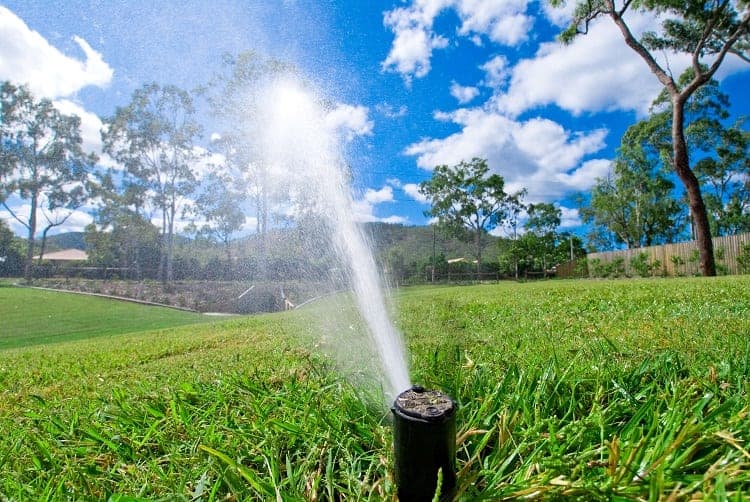
- Mowing: You don’t have to mow this type of grass often because it grows slowly. Keep the grass at a height between 1 ½ and three inches.
- Watering: Stick to watering Zoysia once a week but make it a nice deep soak.
St. Augustine
- Mowing: When mowing this type of grass, keep it at a height of between 2.5 and 4 inches.
- Watering: You should water it once a week, just like many other types of grasses. This definitely seems to be the standard.
Buffalo Grass
- Mowing: Keep its grass at a height of between 1.3 and 2.5 inches. If you make it too short, it will lose its green color and turn yellow.
- Watering: It hardly needs water during the winter, but try to stick to giving it water once a week. Increase this to two or three times a week in summer.
Consider The Soil You Have
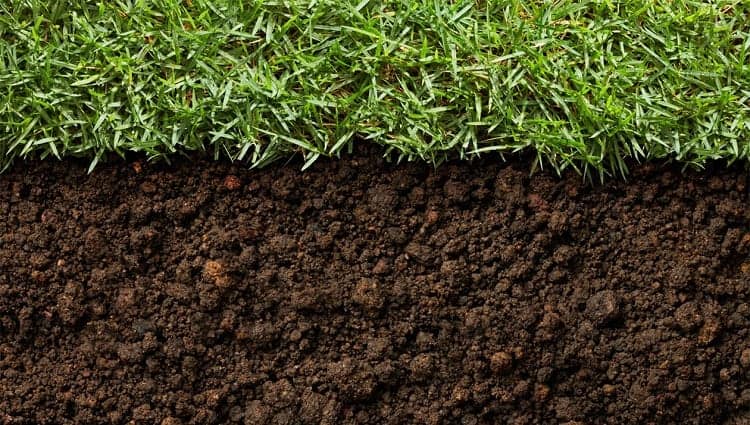
It’s not just the climate that has an effect on the different types of grasses and how they fare, but also the soil in which they’ve been seeded.
What types of soil do different grasses need in order to be healthy? Let’s take a look.
- Kentucky Bluegrass: This type of grass performs best when it is in fertile, well-drained soil. You should plant it during the fall when soil temperatures are between 50 and 65 degrees Fahrenheit. You should aim to have your soil pH between 6.0 and 7.0 for it to grow well.
- Perennial Ryegrass: It requires well-drained, fertile, and sandy or loamy soil. The best time for its seeds to germinate is in the early spring or early fall when soil temperatures are between 55 and 65 degrees Fahrenheit. It needs a soil pH of between 5.5 and 7.5.
- Fine Fescue: It can deal with various soil conditions, which makes it quite easy to plant, such as clay, sandy, or even rocky soil. When planted, it needs a soil temperature of between 50 and 65 degrees Fahrenheit, so it can be planted in the springtime. This means daytime temperatures are between 60 and 75. When it comes to soil pH, you should ensure it’s between 5.5 to 6.0 as it needs slightly acidic soil.
- Tall Fescue: It can adapt to various types of soil, but performs at its best when planted in clay soil. Plant it when temperatures are between 60 and 75 degrees so that its seeds will germinate successfully. Although it can deal with various types of soil pH, Tall Fescue does perform at its best when the soil pH is between 5.8 and 6.5.
- Bermuda Grass: This type of grass is also quite adaptable to different types of soil. When you plant Bermuda Grass, make sure that it’s spring, late spring, or early summer. It needs soil temperature that’s consistently above 65 degrees Fahrenheit, which you’ll know is occurring when the air temperature during the day is above 80 degrees. It requires soil pH of between 5.8 and 7, but it can grow when the soil is alkaline.
- Zoysia: It requires soil that is loamy, which has the best of both sandy and clay soils. But it can grow in a variety of different soil types. It needs to be planted when temperatures are between 80 and 100 degrees Fahrenheit. It needs a soil pH between 6.0 and 6.5, but if you’ve tested the soil with a home kit and it reveals that your soil pH is higher, you can apply sulfur to the soil to lower it.
- St. Augustine: It’s quite adaptable to various types of soil and conditions, but it can’t deal with waterlogged or compacted soil. Plant this grass in spring, when temperatures are between 80 and 100 degrees Fahrenheit. It needs a soil pH of between 5.0 and 7.0, so it’s slightly acidic.
- Buffalo Grass: It needs soil with a pH between 5.6 and 7.0. The soil should drain well and get a lot of sunlight. This type of grass requires a minimum of six hours of direct sunlight daily. It needs to be planted when the soil temperature is between 60 and 70 degrees Fahrenheit, and the air temperature is between 70 and 90 degrees.
What Is The Transition Zone?
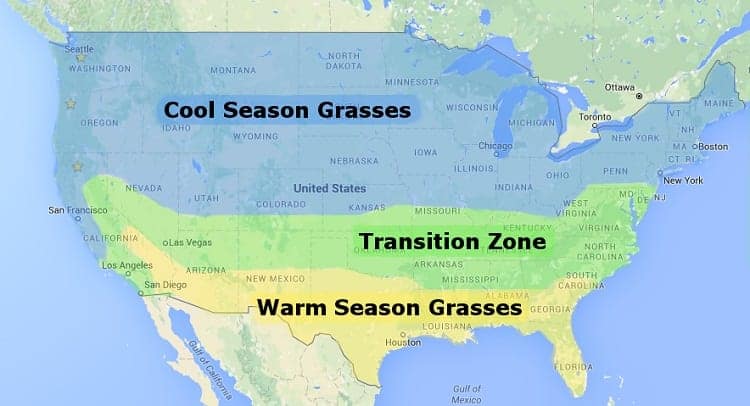
There is a region in central and eastern U.S. called the transition zone because it’s difficult to grow grass in this area.
The reason why is because it becomes too cold for warm-season grasses during winter, yet too hot for cool-season grasses to grow well during the summer!
To deal with this problem, gardening professionals will use a blend of grasses to ensure that the different times of the year are accommodated for.
Related Questions
How long do grass seeds take to germinate?
Grasses will germinate at different types, but generally, you can expect the seeds to germinate between five and 30 days after being planted.
How long do you have to wait to mow grass after it’s been seeded?
You need to give the seeds a chance to germinate and the grass to grow before you mow it, which is generally a two-month period.
Conclusion
After reading this article, it’s now clear to see that there are many different types of grasses that you can grow.
However, to make sure that your lawn is as pristine and healthy as possible, it’s essential to grow the type of grass that flourishes in your climate.
There are also other things you can do to ensure that your grass grows well, such as checking soil pH and planting the grass at the right time.
Last Updated on August 20, 2022 by Gustaf Johansson




